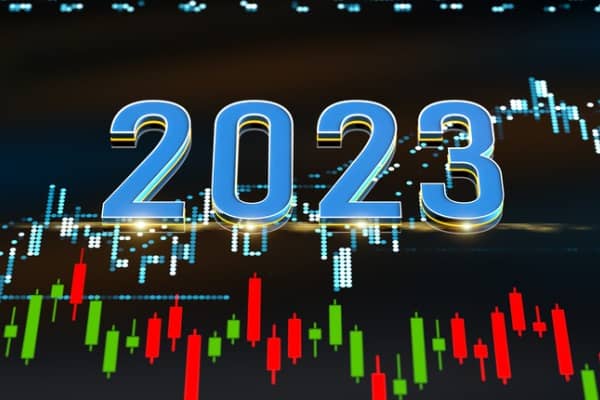So much for that big stock market comeback this year.
Sure, it’s only February. But the Dow is now down almost 1% after a sizzling start to the year. At one point in mid-January, the average of 30 blue chips was up nearly 4% in 2023.
The S&P 500 and Nasdaq are still sporting solid gains of about 4% and 10% respectively year-to-date. But they too have retreated from higher levels just a few weeks ago.
Stocks got off to a decent start for the week, with the Dow gaining more than 70 points, or 0.2%, to close Monday’s session. The S&P 500 and Nasdaq rose 0.3% and 0.6% on Monday.
But the market suffered a dismal week last week thanks to more signs that inflation pressures aren’t cooling off as quickly as investors, consumers — and most likely the Federal Reserve — would like.
Traders are now betting that there’s a 100% probability that the Fed will raise rates again at its next meeting on March 21-22.
A month ago, the market had priced in a 15% chance that the central bank might pause and leave rates at a level of 4.5% to 4.75%. But inflation worries are once again so prevalent that investors are now even factoring in odds of about 25% that the Fed will hike rates by a half percentage point next month instead of just another quarter-point.
Bracing for higher rates and slower earnings growth
As investors come to grips with this, reality is settling in. Stocks are unlikely to keep climbing if the Fed continues to tighten. It’s harder to justify more expensive valuations for the market in an environment where higher interest rates will likely eat into profits.
“There is absolutely no reason for the stock market to surge from this point,” said John Norris, managing director with Oakworth Capital, adding that investors have no idea when the Fed is finally going to pause. He speculated that if inflation doesn’t cool off soon, the Fed may need to keep raising rates all the way up to 6%.
“Inflation will eventually subside, but there is the uncertainty of not knowing when the Fed will stop,” Norris said.
The hope is that the Fed won’t create a recession by raising rates too aggressively. But if the economy winds up having “no landing” — meaning that growth won’t really cool off at all — instead of a hard or soft one, the rate hikes will take their toll.
“Even if the economy avoids recession, 2023 will be a difficult year for corporate profits,” said David Kelly, chief global strategist with JPMorgan Asset Management, in a report Monday. “If there is a recession, profits will likely fall sharply.”
Still, Kelly is cautiously optimistic that 2024 and beyond will be better years for earnings, and therefore stocks.
“As the economy stabilizes and settles into what we believe should be a slow-growth, low-inflation and low-to-moderate interest rate environment, profits should recover and likely outpace economic growth overall,” he said.
Others aren’t so sure that the Fed will be able to keep the economy and financial markets afloat.
“The era of expanding central bank balance sheets and ultra-easy monetary policy has come to an end, leaving an almost unrecognizable global investment landscape.” said Seema Shah, chief global strategist at Principal Asset Management, in a report Monday.
“Expectations for returns need to be lowered, expectations for volatility need to be raised and, above all, additional investment discipline will be required,” she added.

